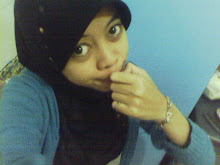
Caltech and IBM scientists use self-assembled DNA scaffolding to build tiny circuit boards Nanotechnology advance could lead to smaller, faster, more energy-efficient computer chips
San Jose-CA,17 Agustus 2009
Pasadena,California-Peneliti dari Institut Teknologi California(Caltech) dan pusat peneliti IBM Almaden mengembangkan teknologi baru yg terorientasi dan merupakan potongan self-assembly dari DNA atau yg disebut dengan “DNA origami” di permukaan yang kompatibel dengan peralatan manufaktur semikonduktor.Posisinya tepat berada pada DNA nanostruktur,yg dapat bergilir seperti miniatur papan sirkuit untuk ketepatan assembly dari komponen chip computer.
Kemajuannya,tidak hanya mempermudah manufaktur untuk membuat chip yang lebih kecil, lebih cepat dan powerful, namun juga lebih efisien dan murah. Umumnya processor sekarang dibangun dengan teknologi 32nm, namun IBM menemukan cara untuk mengatasi masalah tersebut dengan membangun chip menggunakan teknologi 22nm, yang sekaligus untuk eksplorasi kelas transistor baru yang menggunakan carbon nanotube atau silicon nanowire.
Struktur DNA origami dapat digambarkan sebagai penerobosan potensial untuk kreasi dari sirkuit nanoscale.Dalam proses pembuatan yg dilakukan oleh peneliti senior Caltech dan bekerja sama dengan Paul W.K Rothemund serta rekannya,molekul DNA self-assembly membangun dirinya sendiri via reaksi ion antara single viral DNA dan campuran synthetic oligonucleotide yang berbeda.Bagian kecil ini memainkan peran sebagai bahan viral DNA yg sangat baik di dalam dua potongan dimensional yg terus melengkapi dasar-pair binding.
Metode itu juga secara efektif memasukkan DNA origami ke dalam nanostruktur seperti dalam bentuk kotak, segitiga dan bintang dengan dimensi 100nm hingga 150nm dan dengan tebal 2 kali panjang helix DNA.
Tapi ada satu masalah untuk menggunakan DNA origami,bagaimanapun itu merupakan struktur pembuatan dalam saltwater solution-mengingat sirkuit elektronik dibuat di dalam permukaan,seperti tablet silicon,sehingga mereka dapat berintegrasi dengan teknologi lain.Selain itu struktur DNA origami juga menempel secara acak pada permukaan,yg artinya “jika kamu mengalirkan DNA origami keluar dari permukaan pada potongan mereka,mereka akan menyerang setiap tempat.Bagian kecil itu seperti permainan kartu,kamu memilih kartunya dan melemparnya ke lantai,mau tak mau mereka berpencar ke seluruh tempat.Seperti mengacak persiapan DNA origami yg sangat tidak berguna.Jika mereka membawa sirkuit elektronik,sebagai contoh,mereka kesulitan untuk menemukan dan memasang kawat ke dalam sirkuit yg lebih besar”jelas Rothemund,orang yg memimpin proyek ini dengan IBM.
Untuk menghilangkan masalah ini,Rothemund dan rekannya di Pusat Penelitian Almaden membangun jalan untuk memposisikan DNA origami nanostruktur pada permukaan yg tepat,”untuk menjajarkan mereka seperti bebek yg berbaris”kata Rothemund.
”Ini menjatuhkan satu masalah utama dalam menggunakan teknologi DNA origami”ia menambahkan.
Dalam proses pembuatan yg dilakukan oleh peneliti IBM yg merupakan ciptaan Rothemund,sinar electron atau optical lithographi dan sketsa plasma oksigen,serta teknik semikonduktor konvensional,digunakan untuk membuat pola susunan di dalam tablet silicon,menimbulkan ukuran lithographi template yg pantas dan mencocokan potongan tersebut dari struktur segitiga individu DNA.Secara negative sketsa potongan-potongan kecil terisi,sebagai struktur DNA origami,dan oleh karena itu “lengket”.
Untuk menyambungkan origami pada template,ion magnesium ditambahkan ke larutan yg mengandung air garam.Secara positif ion magnesium dapat terisi potongan untuk ke dua DNA origami dan secara negative potongan-potongan kecil terisi di dalam template.Jadi,ketika larutan mengalir keluar template,tersusunlah “sandwich” negative-positive-negative,dengan atom magnesium yg berlaku sebagai lem untuk melekatkan origami ke potongan-potongan kecil yg lengket.
“Segitiga mengikat kuat ke potongan-potongan kecil yg lengket,tetapi mereka juga dapat sedikit bergoyang-goyang,sehingga mereka dapat berbaris sejajar dengan potongan-potongan kecil yg lengket.Jadi,kita tidak hanya dapat menempatkan origami dimana pun kita menginginkannya,tetapi mereka juga dapat berorientasi di arah mana pun yg mereka inginkan”kata Rothemund
Posisi DNA nanostruktur dapat berjalan sebagai penopang,atau miniatur papan sirkuit,komponen assembly –seperti carbon nanotubes,nanowires,dan nanoparticles-pada dimensi yg mungkin lebih pintar dari pembuatan teknik konvensional semikonduktor.Kemungkinan ini menimbulkan alat fungsional yg dapat digabungkan ke dalam struktur yg lebih besar,sebaik kemungkinan belajar dari menyatukan nanostruktur dengan mengetahui koordinatnya.
“Jarak diantara komponen dapat mencapai 6 nanometer,sehingga resolusi dari prosesnya kira-kira 10 kali lebih tinggi daripada proses yg sekarang ini kita gunakan untuk membuat chip komputer.Proses ini tidak terbatas hanya untuk mengatur hal yg berkaitan dengan ilmu eksakta dan komputer,seperti komponen elektronik.Sebagai contoh,ahli biologi belajar tentang bagaimana protein berinteraksi pada pola di dalam inti DNA origami.Ini mungkin berguna dalam menyelidiki motor protein,kekuatan mesin kecil yg ada pada otot kita.Mereka bekerja secara bergerombol,mereka menggerakan motor bersama-sama.Untuk mempelajari bagaimana perbedaan susunan dari kerjasama motor,peneliti menggunakan DNA origami untuk mengatur gerombolan tersebut”jelas Rothemund
Referensi : google,IBM articles,& http://media.caltech.edu/press_releases/13284

